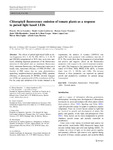
Please use this identifier to cite or link to this item:
http://ricaxcan.uaz.edu.mx/jspui/handle/20.500.11845/1034Full metadata record
| DC Field | Value | Language |
|---|---|---|
| dc.contributor | 20608 | es_ES |
| dc.contributor | 31249 | es_ES |
| dc.contributor.other | https://orcid.org/0000-0002-7337-8974 | - |
| dc.contributor.other | https://orcid.org/0000-0002-3961-2608 | - |
| dc.coverage.spatial | Global | es_ES |
| dc.creator | Olvera González, Ernesto | - |
| dc.creator | Alaniz Lumbreras, Daniel | - |
| dc.creator | Ivanov, Rumen | - |
| dc.creator | Villa Hernández, José de Jesús | - |
| dc.creator | De la Rosa Vargas, José Ismael | - |
| dc.creator | Lépez Cruz, Irineo | - |
| dc.creator | Silos Espino, Héctor | - |
| dc.creator | Lara Herrera, Alfredo | - |
| dc.date.accessioned | 2019-05-29T17:39:40Z | - |
| dc.date.available | 2019-05-29T17:39:40Z | - |
| dc.date.issued | 2013 | - |
| dc.identifier | info:eu-repo/semantics/publishedVersion | es_ES |
| dc.identifier.issn | 0167-6903 | es_ES |
| dc.identifier.issn | 1573-5087 | es_ES |
| dc.identifier.uri | http://ricaxcan.uaz.edu.mx/jspui/handle/20.500.11845/1034 | - |
| dc.identifier.uri | https://doi.org/10.48779/pnfz-t516 | - |
| dc.description.abstract | The effects of pulsed light based-LEDs at eleven frequencies (0.1, 1, 10, 50, 100, 500 Hz, 1, 5, 10, 50 and 100 kHz) programmed at 50 % duty cycle were analyzed, obtaining important parameters of the fluorescence emission of chlorophyll such as: maximum fluorescence (Fm0), minimum fluorescence, the fluorescence emission in steady state, maximum efficiency of PSII (Fv0/Fm0), the fraction of PSII centers that are open, photochemical quenching, nonphotochemical quenching (NPQ), quantum efficiency of photosystem II (UPSII), electron transport rate (ETR) and quantum yield of CO2 assimilation (/CO2). For the study and validation of the results obtained in the experiments, the analysis of variance (ANOVA) was applied 0for each parameter with confidence intervals of 95 %. The results show that the frequencies of pulsed light had positive and negative effects on the fluorescence parameters with respect to the control treatment (continuous light). The frequencies that generated the best performance of Fv0/Fm0, NPQ, UPSII, ETR, /CO2 in tomato plants were 0.1, 1, 100 Hz, and 1 kHz. The increase obtained in these parameters can represent an optimal growth and productivity conditions for optimal energy consumption. | es_ES |
| dc.language.iso | eng | es_ES |
| dc.publisher | Springer | es_ES |
| dc.relation.uri | generalPublic | es_ES |
| dc.rights | Atribución-NoComercial-CompartirIgual 3.0 Estados Unidos de América | * |
| dc.rights.uri | http://creativecommons.org/licenses/by-nc-sa/3.0/us/ | * |
| dc.source | Plant Growth Regulation, Vol. 69, pp. 117–123, 2013. | es_ES |
| dc.subject.classification | INGENIERIA Y TECNOLOGIA [7] | es_ES |
| dc.subject.other | Chlorophyll fluorescence | es_ES |
| dc.subject.other | Pulsed light | es_ES |
| dc.subject.other | LEDs | es_ES |
| dc.subject.other | Growth plants | es_ES |
| dc.title | Chlorophyll fluorescence emission of tomato plants as a response to pulsed light based LEDs | es_ES |
| dc.type | info:eu-repo/semantics/article | es_ES |
| Appears in Collections: | *Documentos Académicos*-- UA Ingeniería Eléctrica | |
Files in This Item:
| File | Description | Size | Format | |
|---|---|---|---|---|
| Olvera-González2013_Article_ChlorophyllFluorescenceEmissio.pdf | 368,3 kB | Adobe PDF |  View/Open |
This item is licensed under a Creative Commons License
